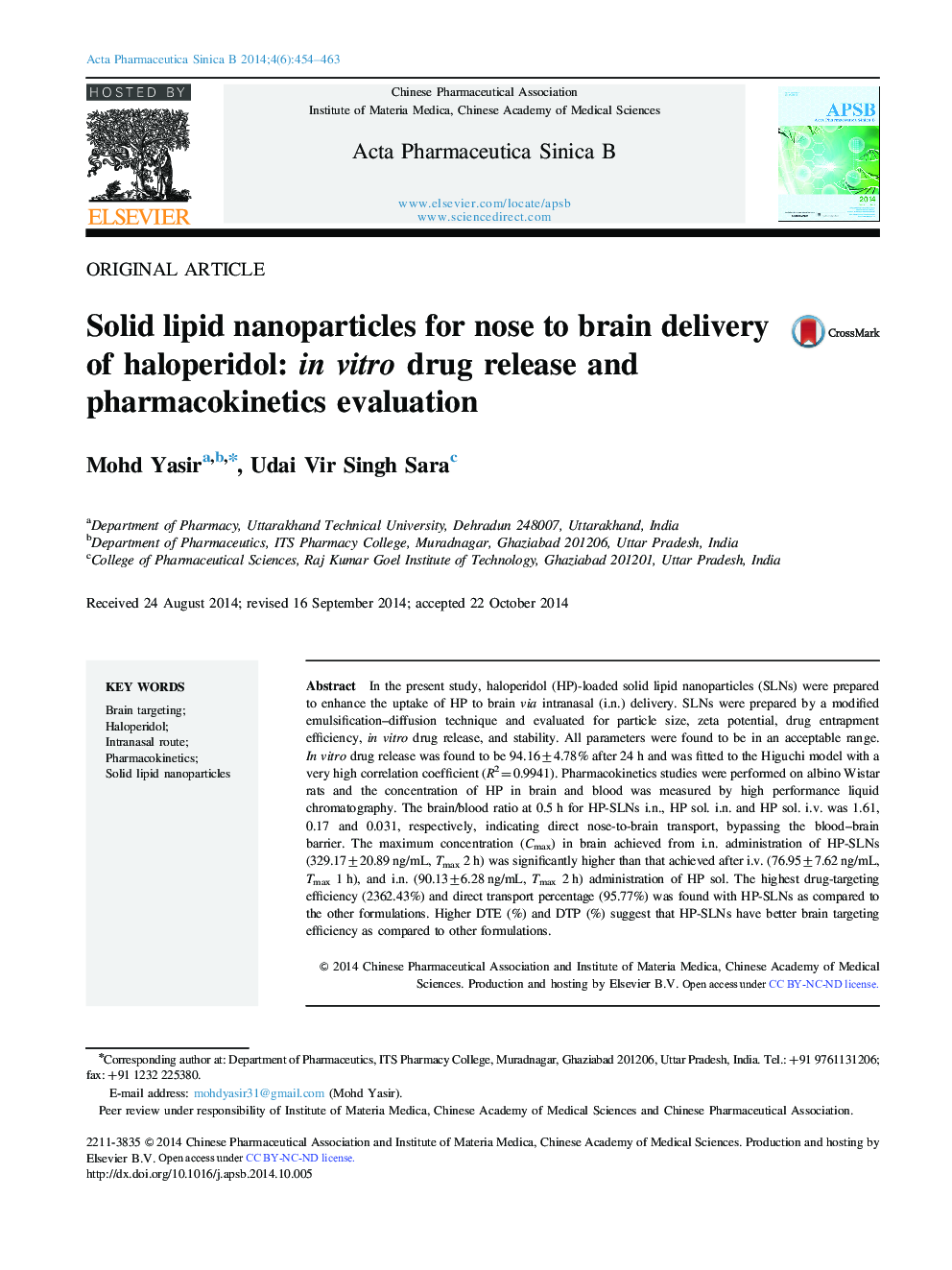| Article ID | Journal | Published Year | Pages | File Type |
|---|---|---|---|---|
| 2474679 | Acta Pharmaceutica Sinica B | 2014 | 10 Pages |
In the present study, haloperidol (HP)-loaded solid lipid nanoparticles (SLNs) were prepared to enhance the uptake of HP to brain via intranasal (i.n.) delivery. SLNs were prepared by a modified emulsification–diffusion technique and evaluated for particle size, zeta potential, drug entrapment efficiency, in vitro drug release, and stability. All parameters were found to be in an acceptable range. In vitro drug release was found to be 94.16±4.78% after 24 h and was fitted to the Higuchi model with a very high correlation coefficient (R2=0.9941). Pharmacokinetics studies were performed on albino Wistar rats and the concentration of HP in brain and blood was measured by high performance liquid chromatography. The brain/blood ratio at 0.5 h for HP-SLNs i.n., HP sol. i.n. and HP sol. i.v. was 1.61, 0.17 and 0.031, respectively, indicating direct nose-to-brain transport, bypassing the blood–brain barrier. The maximum concentration (Cmax) in brain achieved from i.n. administration of HP-SLNs (329.17±20.89 ng/mL, Tmax 2 h) was significantly higher than that achieved after i.v. (76.95±7.62 ng/mL, Tmax 1 h), and i.n. (90.13±6.28 ng/mL, Tmax 2 h) administration of HP sol. The highest drug-targeting efficiency (2362.43%) and direct transport percentage (95.77%) was found with HP-SLNs as compared to the other formulations. Higher DTE (%) and DTP (%) suggest that HP-SLNs have better brain targeting efficiency as compared to other formulations.
Graphical abstractThe study indicates that SLNs represent a robust drug brain specific delivery system to overcome the blood–brain barrier via i.n. route. Ultimately, the current work may provide a successful concept for clinical application of HP via i.n. route in the treatment of psychiatric conditions like schizophrenia in the future. Figure optionsDownload full-size imageDownload as PowerPoint slide
